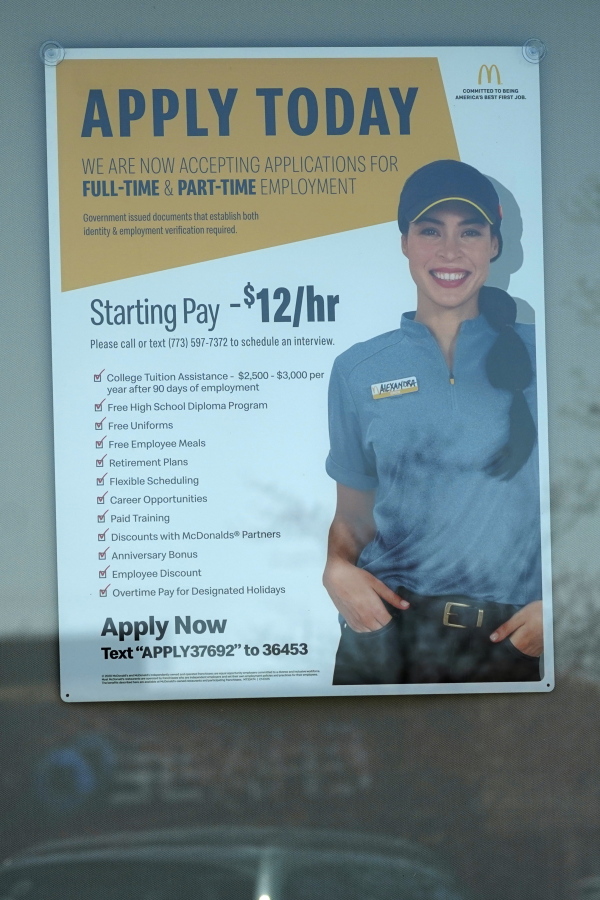WASHINGTON – A surge in hiring in the United States last month – 916,000 added jobs, the most since August – coincides with growing confidence that a blistering pace of job growth will continue as vaccinations increase and federal aid fuels economic growth.
The most optimistic economists predict that between now and year’s end, the nation could produce as many as 10 million more jobs and restore the labor market to its pre-pandemic level.
Yet even in normal times, it would be hard to regain all those jobs so quickly. And these aren’t normal times.
Many people who’ve been thrown out of the labor force remain fearful of the coronavirus and reluctant to take face-to-face service jobs. Millions of parents are still caring for children attending school online – and can’t take jobs because they can’t find or afford child care.
Extended unemployment aid has meant that some employers might have to pay more to attract workers, which they may feel unable to do. And some people will need new skills before they can land a job to replace the one they lost.
While few doubt that the trillions in federal money flowing through the economy will help accelerate hiring, the challenges are sure to endure.
Health fears
A sizable majority of Americans remain unvaccinated. And after weeks of sharp declines, the number of daily infections is creeping back up. Recruiters say that trend is discouraging some of the unemployed from taking jobs.
“People are afraid to come to work – there is some of that,” said Tammy Browning, president of KellyOCG, a staffing agency.
Ongoing vaccinations ought to gradually reduce such fears, although a portion of Americans remain hesitant to get vaccinated. Browning also suggested that employers will need to become more creative about making workers feel comfortable on the job. Many of her firm’s clients are manufacturing companies. On many hot factory floors, their employees have to wear masks and gloves for eight or more hours a day.
Companies should consider providing more break times, Browning said, and allow workers to remove their masks outside or in socially distant break rooms.
As a single mother, Jennifer Knapp of Augusta, Maine, worries about what a return to work would mean for her and her children’s health. A year ago, Knapp, 44, lost her job as a receptionist at a hotel and spa, a place she described as a “hub of germs.”
“There is work out there, if you want to put yourself at risk,” she said.
But the open jobs she sees are typically temporary and offer low pay. Right now, Knapp is living off savings, child support payments from her ex-husband and unemployment aid. Like many parents, she’d like to find a work-from-home job, ideally in her field of psychology and social work.
“The goal,” she said, “is to get back out there and work, as long as my kids are doing OK.”
Need for child care
Nearly 2.5 million women lost jobs and stopped looking for work during the pandemic. In most cases, experts say, it was because so many children were suddenly stuck at home, going to school online. Better child care options or more flexible work schedules would be needed to fully reverse that trend.
Some such change is becoming evident as schools and child care centers reopen. About 500,000 women returned to the labor force in March and found jobs. The improvement could continue in the coming months: Jed Kolko – chief economist at Indeed, the job listings website – says job openings at child care centers are growing, a sign that more of these centers are back in business.
Recruiters also say flexible or hybrid work schedules, along with benefits for part-time workers, may be critical in attracting job seekers, especially women.



